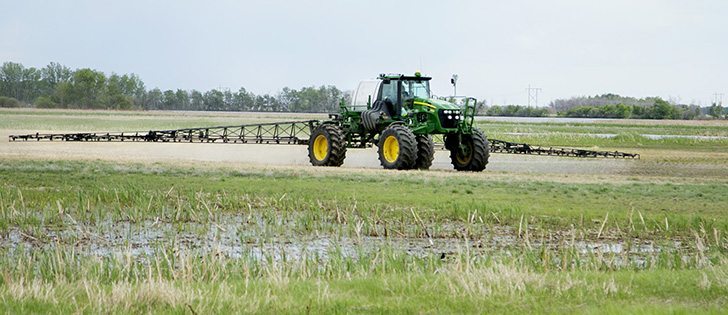Bayer is registering a hybrid canola that is resistant to both Liberty, glufosinate, and glyphosate herbicides.
It may be available in 2016.
“It’s not new to them (farmers),” said James Humphris, manager of seed traits at Bayer.
“They have been using these traits for many years now. They are just both in the same hybrid with an InVigor, so it’s still within our breeding system as well.”
The InVigor Choice Hybrid contains the Liberty as well as the Roundup trait.
Read Also

Gap in emission regulations hamstrings Canadian hybrid truck manufacturer
A B.C. company building hybrid engines for heavy trucks says they have the opportunity to build something leading edge in Canada, but our own laws are stopping them from doing it.
Stacking them in one hybrid allows growers to use two distinctive herbicide systems on the same crop. Most InVigor canola already receives a pre-emergent glyphosate spring burn-off. Now, the glyphosate resistance in the InVigor hybrid allows growers to apply glyphosate post seeding if they didn’t get to do a pre-emergent pass.
Humphris said growers have been concerned about how to deal with volunteer canola that will ultimately arise from this hybrid line.
“This is a reason many growers have been growing InVigor, not just because of it’s performance but because of volunteers.”
Users of the stacked-trait hybrid will need to include a tank mix partner to deal with volunteer plants because glyphosate alone will not kill it.
“But that’s no different today than a grower who is growing a straight Roundup Ready,” Humphris said.
“They need to put something into his tank to control the volunteers.”
Clark Brenzil, a weed control specialist with Saskatchewan Agriculture, said he doesn’t foresee the hybrid being more troublesome than other canola lines, as long as producers follow recommended rotations.
“You’re going to be having cereals on either end of the canola crop, and then in the third or the fourth year of the rotation you’re going to be having a pulse opposite canola,” Brenzil said. “So by the time it rolls back around again to canola, that means the volunteers will be cleaned up. And you will largely be using groups that aren’t linked to either of those two herbicides.”
Humphris said the hybrid may not be the best product for growers with tight rotations.
“They should be looking at their herbicide rotation over four years, and if volunteer canola is a problem they need to have a strategy.”
Humphris said the hybrid would work well in fields that have high weed pressure, including Canada thistle and cleavers.
The stacked trait hybrid also provides more management options for growers with fields suffering from resistance pressure.
“Whether its Group 9 glyphosate resistance, or we are seeing Group 1 coming into the marketplace, growers’ herbicide rotations will change and they will be looking for more options. This is one of those options.”
















